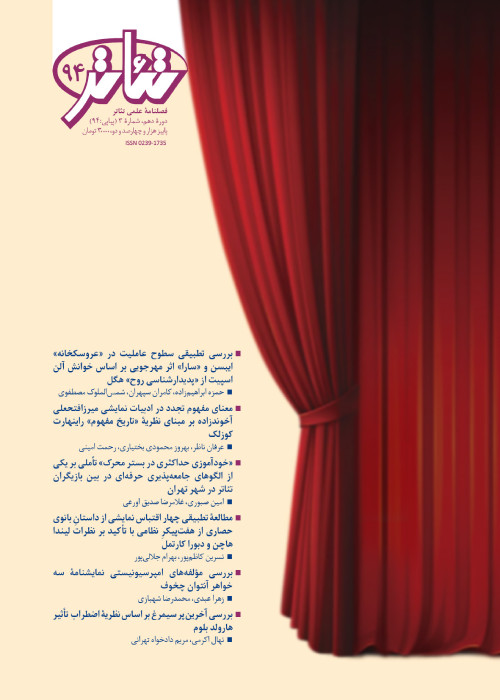“Aesthetic Suicide in Conflict with Religious Suicidal Reliance on Kant’s Aesthetics by Looking at Hippolytus by Euripides and Phaedra’s Love by Sarah Kane”
Kant’s third critique’s emphasis is on the analysis of the beautiful, individuality of the subject along with the possibility of aesthetic judgement’s universality. On the one hand, Kant considers the attainment of universal validity favorable in two essential forms of pleasure and attention, and on the other hand, deems the issue of collectivity significant for the theme of individualism as universal validity is necessary for aesthetic judgement , it is therefore possible to envision two different outlooks for individuality in the third critique; one in which the necessity addresses its foundation and the other in which its structure is to be based on the necessity of pleasure. The evolution of this course in classical and modern literature will be studied. What constitutes the classical literature is the necessity of attention and what embraces modern literature is the necessity of pleasure and both necessities are rooted in individuality. The very essence of the necessity of attention is the sacred and religious beliefs and the root of the necessity of pleasure is aesthetics. Phaedra kills himself in Hippolytus’ play because he intends to take the pleasure of the gods with him by relying on religious belief. In the struggle with this death, Phaedra kills himself in the play of Phaedra’s love to take revenge on Hippolytus. In other words, the first place is suicide for the satisfaction of heaven and the second place is suicide for one’s own satisfaction. Basically, the movement of theatrical characters from the ownership of the body for the gods to the ownership of the body for itself is rooted in the issue of individualism; It is enough that the word suicide has never entered the dictionary since the era of Romanticism. Thus, the analogy between the death of the classical Phaedra and the death of the modern Phaedra is under the banner of aesthetic and religious necessities, which find their roots in Kant’s third critique. The first has a religious death and the second an aesthetic death. This evolution and sum of all these topics can form the structure of this research. Where man chooses himself at the crossroads of his choice and the gods.
Kant , necessary , suicide , Sarah Kane , Phaedra , Hippolytus , Euripides , Aesthetic
- حق عضویت دریافتی صرف حمایت از نشریات عضو و نگهداری، تکمیل و توسعه مگیران میشود.
- پرداخت حق اشتراک و دانلود مقالات اجازه بازنشر آن در سایر رسانههای چاپی و دیجیتال را به کاربر نمیدهد.


